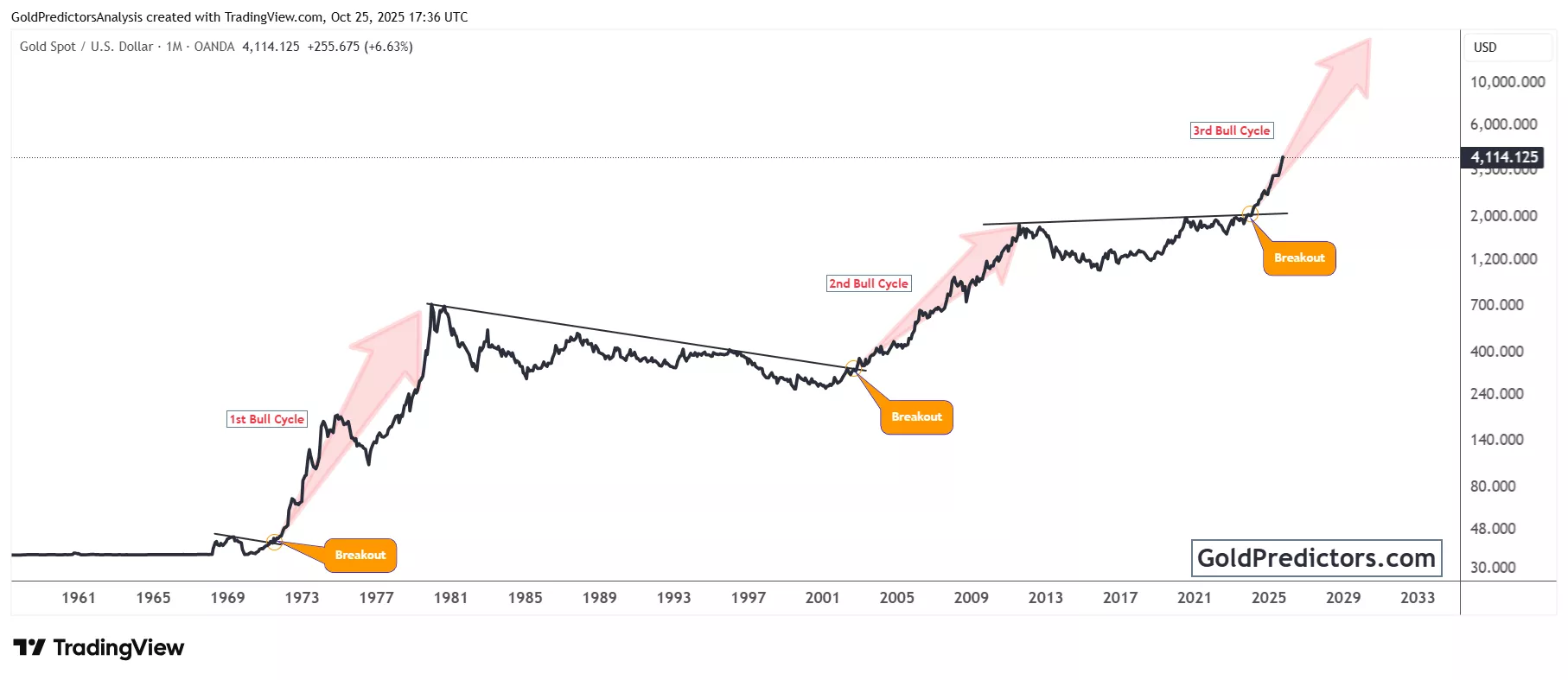Gold Pulls Back As US-China Trade Optimism And Softer Inflation Weigh On Safe-Haven Demand
Image Source: Unsplash
Gold (XAUUSD) has come under pressure as improving US-China trade relations and softer inflation data have shifted the market outlook. Renewed optimism over a potential trade agreement, combined with expectations of Fed rate cuts, has prompted a move away from safe-haven assets. As risk appetite strengthens, gold's near-term momentum has weakened. Despite the short-term pullback, the broader technical setup remains bullish, with long-term patterns pointing to continued upside.
Gold Prices Dip as US-China Trade Hopes and Softer Inflation Boost Risk Sentiment
Gold has recently declined, driven by renewed US-China trade optimism. Both countries held two days of talks in Malaysia. They reached initial agreements on key issues such as export controls, fentanyl regulation, and shipping levies. The discussions moved from conflict to collaboration. A major boost came from US Treasury Secretary Scott Bessent. He announced that China would delay its rare-earth export restrictions and downplayed the threat of a 100% tariff on Chinese imports. These signs indicate both nations are working to ease tensions before Thursday’s key meeting between Trump and Xi.
In response, markets reacted decisively to the improving trade outlook. Risk appetite surged, lifting Asian equities and strengthening the US Dollar. As capital shifted toward risk assets, gold lost momentum due to its traditional role as a safe-haven in uncertain times. Meanwhile, the Federal Reserve is widely expected to lower interest rates. Two cuts are projected this year, with a 25 basis point reduction likely at the upcoming meeting. Under normal conditions, such a dovish policy would support gold by lowering the opportunity cost of holding non-yielding assets. However, the optimism surrounding a potential US-China trade agreement has outweighed the impact of easing expectations, putting pressure on gold prices.
Meanwhile, market participants are reducing exposure to gold and reallocating toward equities and other risk assets. Friday’s US CPI report added to this shift, showing a 0.3% rise in September and a year-over-year rate of 3%, slightly below expectations. The softer inflation print boosted hopes that inflation is under control. Improved macro sentiment and cooling inflation have reduced demand for safe-haven assets like gold. Looking ahead, gold’s next move depends on the Fed’s decision and the Trump-Xi summit. A surprise or breakdown could lift prices, but continued optimism may extend the correction.
Gold Breakout Signals Third Major Bull Cycle and Long-Term Rally Potential
The gold chart below shows three major bull cycles since the 1970s, each triggered by a decisive breakout above long-standing resistance levels. These breakout points have reliably signaled the beginning of major multi-year rallies. The latest formation now points to a similar pattern unfolding. This suggests that gold may be entering the early stages of a new and potentially powerful upward cycle.
(Click on image to enlarge)

The first major bull cycle began after the gold standard was abandoned in the early 1970s. Once gold broke out, it rallied sharply and reached a major peak by 1980. This marked the start of a long consolidation phase, during which gold formed a multi-decade descending triangle. A second breakout emerged in the early 2000s, setting off another powerful rally that extended through 2011–2012. This move marked the completion of gold’s second major bull cycle in the modern era.
The third breakout occurred after 2020, when gold surpassed its previous all-time highs. This move was followed by a multi-year consolidation just below a key resistance zone. The current chart structure points to a steep upward trajectory, with long-term trends projecting significantly higher levels ahead. Historically, each breakout has led to a strong bull cycle. The sharp angle of the present formation suggests that gold is now entering the early phase of its next major advance.
Gold Price Outlook: Long-Term Bull Trend Intact Despite Short-Term Weakness
Gold remains under short-term pressure as markets rotate into risk assets amid trade deal optimism and easing inflation concerns. While gold typically benefits from dovish Fed signals, the recent rise in risk appetite has reduced safe-haven demand. However, the long-term technical setup remains firmly bullish. With a consistent history of strong rallies following major breakouts, gold now appears to be entering the early phase of another significant upward cycle. The upcoming Fed decision and the outcome of US-China talks will likely shape gold’s short-term direction.
More By This Author:
Gold Consolidates Near Highs As Markets Brace For Inflation Data And U.S.–China Talks
Gold Hits Record Levels On Dovish Fed, Trade War Fears, And Rising Political Uncertainty
Gold Slips Slightly But Uptrend Holds On Dovish Fed And Shutdown Risks
To receive gold and silver trading signals and premium updates, please subscribe here.
Disclosure: Materials distributed by ...
more



